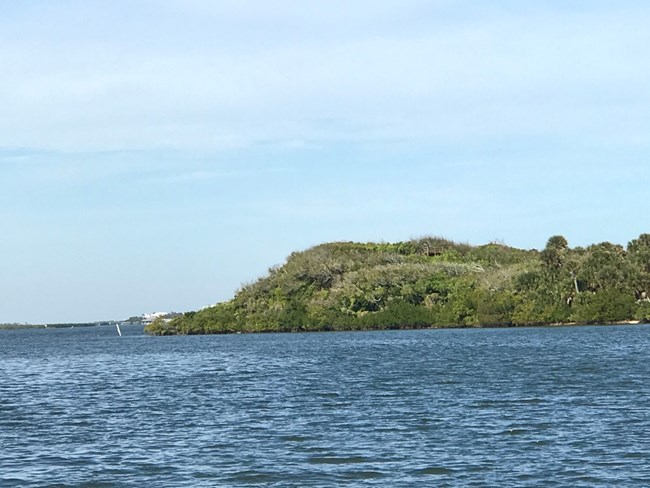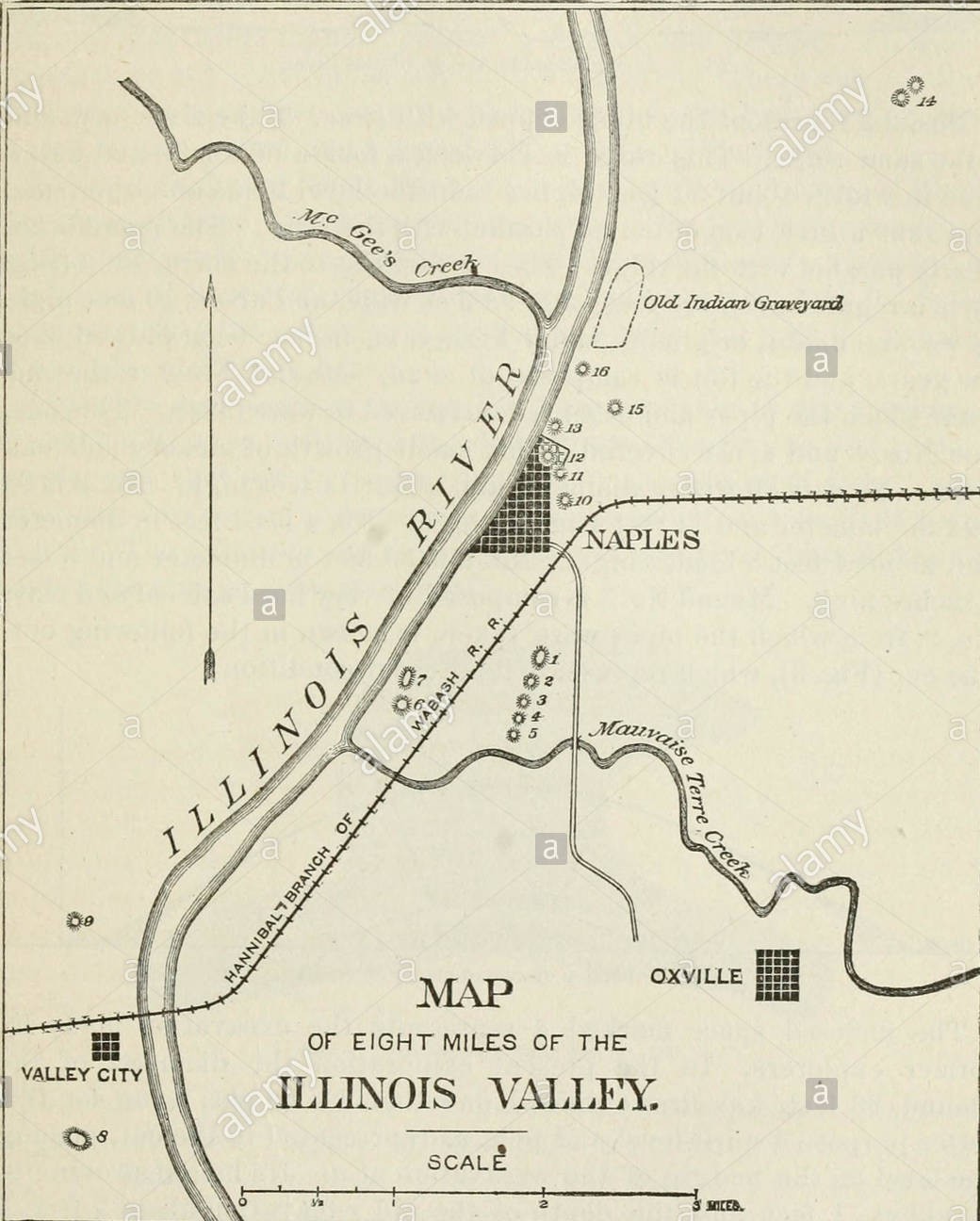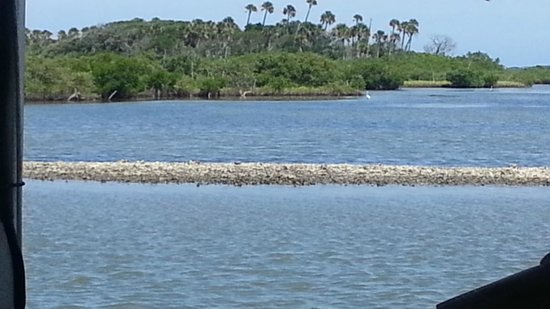The Turtle Mound is an ancient archaeological place located 14 kilometers south of the New Smyrna Beach in Florida, United States. The mound is the biggest shell heaped on the United States mainland, which has an estimated altitude of fifteen meters. It extends for approximately180 meters along the Indian River shoreline and constitutes over 35,000 cubic yards of shells (Green et al., 2019). The area contains refuse and oyster shells from the ancient Timucan community. The location was named ‘The Turtle Mound’ because the heap lost some of its oysters and shells and took the form of a turtle. In addition to this, the mound consists of oysters and dirt from the times of ancient Timucua people who lived in the territory of modern Florida for about five to six centuries before the Europeans came and occupied the place. It also contains several types of tropical plants that can be found in soil.
The location also has the northernmost distribution numerous kinds, which comprise Schoepfia chrysophylloides, Plumbago, and Amyris elemifera, among others. The heat preservation of shells and their closeness to the Atlantic Ocean allows the mound to retain warmer temperatures than surrounding areas (Gillreath-Brown & Peres, 2017). Surveyors from Spain visited the locality and testified on how inhabitants launched their dugout canoes at the mound’s bottom.
The mound was said to have been approximately twenty-three meters high before it was lowered by the mining of shell rocks in the 19th and 20th centuries. Back in the 1970s, the mound was added to the National Register of Historic Places (Harvey et al., 2019). Currently, the location is governed by the National Park Service administration as portion of the Canaveral National Seashore. Furthermore, it was determined that no broad mines had been done as the mound started to appear. Travelers from Spain visited the locality and recounted inhabitants releasing their dugout canoes at the mound’s edge.
The turtle mound is the largest coastal shell on the east coast. On the east coast of Central Florida, alongside the shorelines of Mosquito Lagoon, many mounds were created by the Timucua people. Turtle mound helped stabilize the mounds and slowed erosion. By planting oysters, marsh grass, and mangrove trees around the turtle mound base, no more erosion occurred (Wilder & McCollom, 2018). Lack of erosion enabled settlers of Florida’s east coast to practice farming, through they which acquired their food. Turtle mound helped archaeologists learn more about the Timucua people’s history and the importance of preserving their culture (Donnelly et al., 2017). Since the Timucuas were the first occupants of east coast Florida, they witnessed how the mound grew and adopted their their traditions. They saw it was an important part of the culture and had to make it count as part of their history. The turtle mound helped Timucua families to work together. They also involved children in carrying heavy loads.
Archaeological Research
Archaeological studies help individuals carry out research that is informed and accurate. These studies ensure that the correct information about specific subjects of studies is available. Archaeology is regularly regarded as a branch of socio-cultural anthropology since scientists drawn from environmental, biological, and geological systems mostly operate their studies from the archaeological sites. Furthermore, the research conducted by scientists can sometimes contain of new findings while others are a continuous research due to the area of the study region. Firstly, archaeological research says that there is still no exact date on which the Turtle Mound was formed (Mangin et al., 2019). The researchers predict that the site was used between 800 and 1,400 years ago (Mangin et al., 2019). However, current radiocarbon analysis stipulates that the region dates back to around 1000 BCE, which was further backed by the discovery of ancient pottery believed to be 1,200 years old.
The archaeologists continue to say there has never been a complete purging conducted on the site, making it impossible to have a complete history of the mound. Archaeologists found out that the mound was used by people of the Timucua culture, an indigenous society that occupied most of Central Florida (Green et al., 2019). They also figured the Timucua’s were forcibly evicted from Florida and placed in Cuba because they were attacked by war, slavery, and disease. The research also constituted the multiple names that the mound adopted since European began settling in Florida. The names were as follows; Surruque named after cacique, an Indian tribe that lived in the area; Mount Belvedere, the Rock, Mount Tucker, and Turtle Mount. Further, archaeologists used bows, arrows, spears, and snares to catch various small mammals and reptiles (Kimball & Wolf, 2017). They concluded that the turtle mound is the last remaining souvenir of the Timucua people since most of the mounds have been leveled to provide materials for filling roads. Moreover, they recently found 1,200-year-old pottery, fish bones, and other samples on sight that will be analyzed with radiocarbon dating technology to find out how old the mound was.
Significance
The turtle mound-like any other archaeological site, played a significant role in improving people’s lives around the area. The mound is a visible site that can be spotted from seven miles away out of the sea; hence it was used as a navigational device. Individuals and explorers who wanted to visit the site could freely move without fear of getting lost because it gave them a sense of direction. Also, the large mound was used by Spanish colonialists and mariners as a landmark to guide them during navigation. The Mound can be used as a hiking trail, which led to the peak of an ancient shell heap and provides a magnificent view of the Atlantic Ocean (Witherington et al., 2017). It means people do not need to travel to the Atlantic Ocean because they can visit the site and get the same experience that one would get if they wanted to visit the Atlantic Ocean.
The Timucua people used the mound as a high ground for refugees during hurricanes. When the hurricanes became intense in the city, Timucua hid and sought refuge in the mound. The mound acted as a tribute to the Timucua people and the land they loved and appreciated. It helped uncover the past and save the future of Florida’s first people (Wilder & McCollom, 2018). It acted as a representation of the past of the Timucua’s, where they hoped to recover tradition that is now gone. It is here that we learn more about their future and why we must preserve it. Further, the site acted as a location for adventure. It attracted many explorers from around the world who came to look out for the historical marker of the past as the new inhabitants prepare for the future.
Images of the Turtle Mound



References
Wilder, George J., and Jean M. McCollom. “A floristic inventory of Corkscrew Swamp Sanctuary (Collier County and Lee County), Florida, USA.” Journal of the Botanical Research Institute of Texas (2018): 265-315.
Donnelly, M., Shaffer, M., Connor, S., Sacks, P., & Walters, L. (2017). Using mangroves to stabilize coastal historic sites: Deployment success versus natural recruitment. Hydrobiologia, 803(1), 389–401.
Gillreath-Brown, A., & Peres, T. M. (2017). Identifying turtle shell rattles in the archaeological record of the southeastern United States. Ethnobiology letters, 8(1), 109–114.
Green, W., Caves, M. C., & Williams, L. L. (2019). The Myrick Park Mounds (47Lc10), an Effigy Mound Site in Western Wisconsin. Midcontinental Journal of archaeology, 44(2), 207–229.
Harvey, V. L., LeFebvre, M. J., Defrance, S. D., Toftgaard, C., Drosou, K., Kitchener, A. C., & Buckley, M. (2019). Preserved collagen reveals species identity in archaeological marine turtle bones from Caribbean and Florida sites. Royal society open science, 6(10), 191137.
Kimball, L. R., & Wolf, J. (2017). The ritualized landscape at Biltmore Mound. North Carolina Archaeology, 66.
Mangin, M. J., Schneider, S. G., & Jol, H. M. (2019). Subsurface imaging of a late Woodland Effigy Mound site: Lake Koshkonong Effigy Mounds, Wisconsin.
Turtle Mound Boat Tours Daytona Beach Florida River Cruises www.turtlemoundtours.com. (n.d.). 2020, Web.
Witherington, B., Peruyero, P., Smith, J. R., MacPhee, M., Lindborg, R., Neidhardt, E., & Savage, A. (2017). Detection Dogs for Sea Turtle Nesting Beach Monitoring, Management, and Conservation Outreach.’. Marine Turtle Newsletter, 152, 1–4.